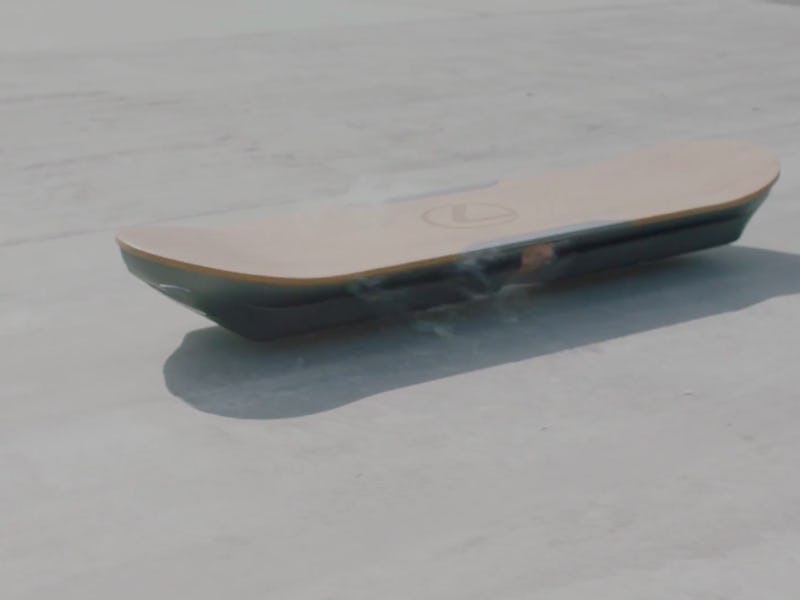The Lexus Hoverboard Isn't Fake, But It Isn't Real Either
Hey, check out this hoverboard you can't own.

Lexus has just announced “SLIDE,” a real-life, working hoverboard. The internet is into it, but news of this technological leap is not blanketing your Facebook wall for a reason: People are rightfully skeptical. We’ve been burned before.
Take the website’s overly catchy blurb for the project: “The Lexus Hoverboard uses magnetic levitation to achieve amazing frictionless movement. Liquid nitrogen cooled superconductors and permanent magnets combine to allow Lexus to create the impossible.” This could be an explanation of how this thing actually levitates, or it could be the best techno-babble this side of a Michael Bay movie.
We’re not saying this thing is completely fake, just that Lexus is conveniently leaving out a few important details to make themselves look like geniuses.
Even though the video shows a skater bro about to gleam the cube before he jumps on a misty hoverboard, you’re not likely to see this at your local skatepark. Unfortunately for would-be Marty McFlys out there, the SLIDE requires magnetic rails embedded in the ground to create its frictionless motion, which I’m betting no one outside of, say, a metal scrapyard has at their disposal quite yet.
Those still wowed by the SLIDE’s bamboo deck and smoky exterior will also be sorely disappointed. It’s merely being tested in Barcelona in the next few weeks, and the board in the video is a one-of-a-kind prototype and it’s likely they won’t have consumer versions available anytime soon to shove under your Christmas tree.
Hoverboards are awesome, but this just seems like a case of Lexus being like, “Aren’t we cool,” and accepting all the high fives without stopping to think why they’re getting all the praise. Until we can actually see someone riding this thing, and not just stepping on one to end a splashy teaser trailer, then we’ll keep watching Back to the Future II and hoping for a hoverboard of our very own.